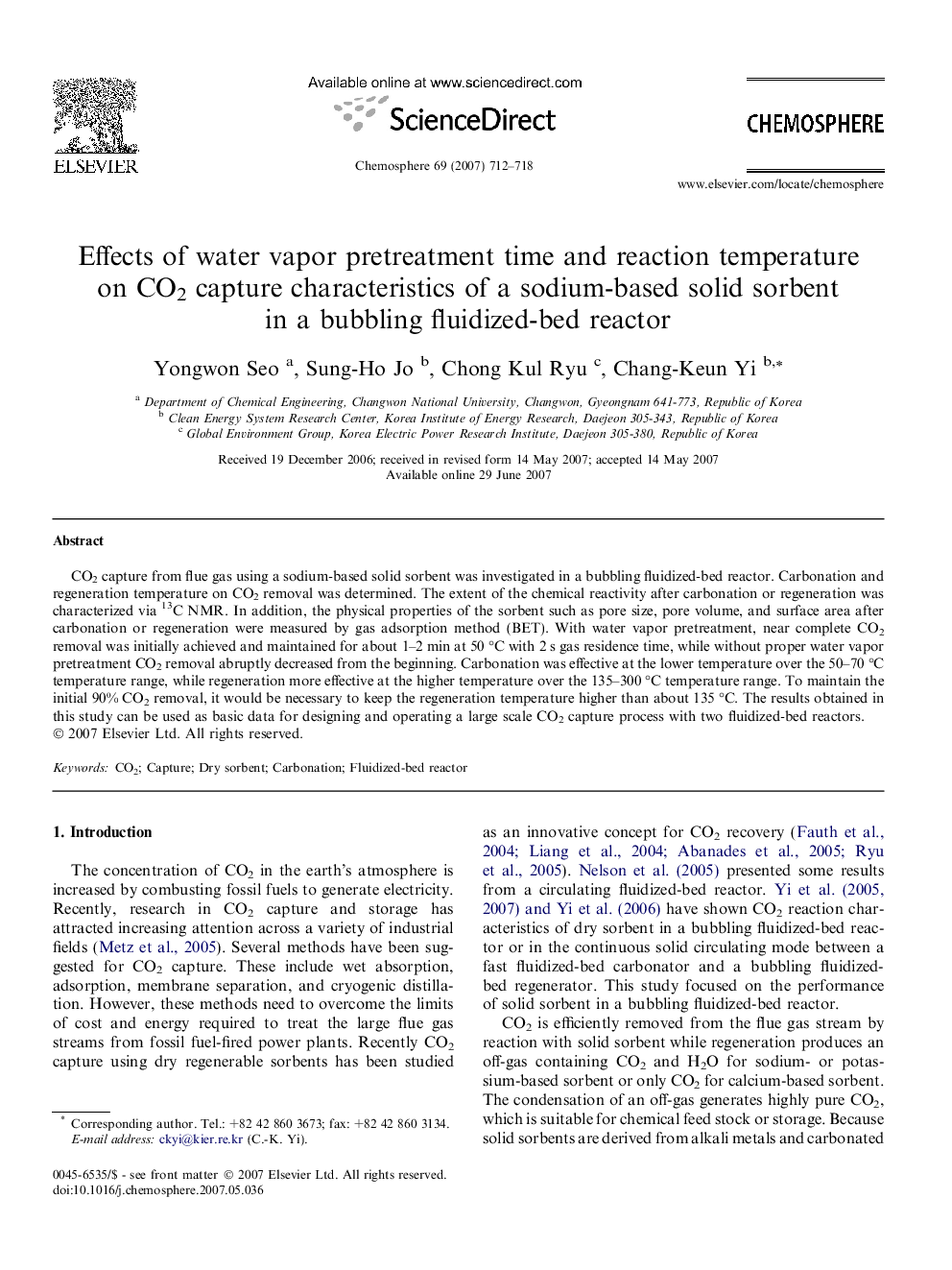| Article ID | Journal | Published Year | Pages | File Type |
|---|---|---|---|---|
| 4414732 | Chemosphere | 2007 | 7 Pages |
CO2 capture from flue gas using a sodium-based solid sorbent was investigated in a bubbling fluidized-bed reactor. Carbonation and regeneration temperature on CO2 removal was determined. The extent of the chemical reactivity after carbonation or regeneration was characterized via 13C NMR. In addition, the physical properties of the sorbent such as pore size, pore volume, and surface area after carbonation or regeneration were measured by gas adsorption method (BET). With water vapor pretreatment, near complete CO2 removal was initially achieved and maintained for about 1–2 min at 50 °C with 2 s gas residence time, while without proper water vapor pretreatment CO2 removal abruptly decreased from the beginning. Carbonation was effective at the lower temperature over the 50–70 °C temperature range, while regeneration more effective at the higher temperature over the 135–300 °C temperature range. To maintain the initial 90% CO2 removal, it would be necessary to keep the regeneration temperature higher than about 135 °C. The results obtained in this study can be used as basic data for designing and operating a large scale CO2 capture process with two fluidized-bed reactors.
